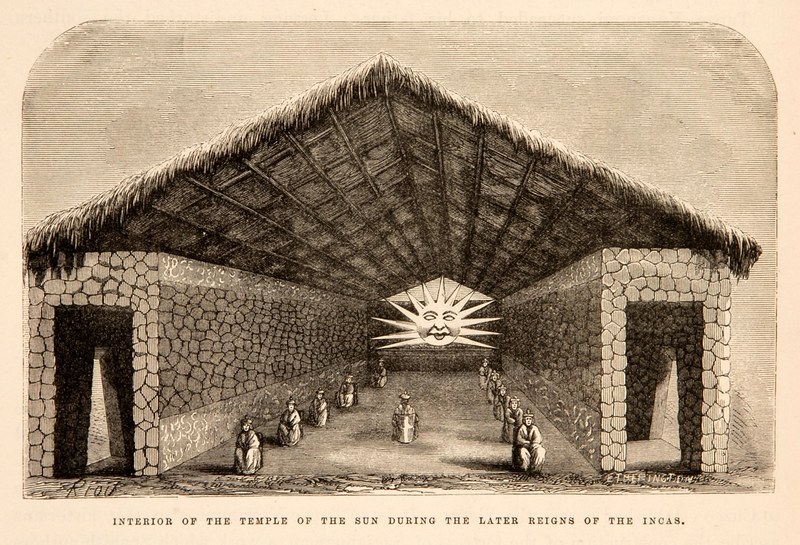Inca
In the Inca empire, measuring time was closely linked to sacred space and pilgrimage sites. Cuzco, Pachacamac, and the Island of the Sun in Lake Titicaca are among the most sacred pilgrimage sites. Among the holy sites, the Temple of the Sun, Coricancha, in Cuzco, was the most important of all the temples.

The Inca built stone towers on the hills above the city of Cuzco and on the Island of the Sun in Lake Titicaca to mark solar time. Pairs of stone markers fixed the setting and rising of the sun, with special regard paid to the solstices.
They created elaborate networks of shrines, or huacas, locating the places of worship in the landscape to form abstract lines radiating out from a central point. These lines are called ceques, a Quechua word meaning line, but also understood to mean trail or path, primarily used for a spiritual journey.
The Inca used the networks of ceques and huacas as calendar markings, to mark the location of important events of the past, and as spatial boundaries.
The huacas included natural features, such as caves, boulders, and springs, as well as man-made features, such as stone towers, houses, fountains, and canals.
For the Inca, the temple at Pachacamac was second in importance only to Coricancha in Cuzco. The temple at Pachacamac was much older than the Incas. It had been conquered and its prestige incorporated into the Inca Empire.
Tiwanaku
The Tiwanaku empire preceded the Inca Empire and left a tremendous legacy. The site of Tiwanaku, occupied for almost two thousand years, was the capital city of the empire. Built on the shores of Lake Titicaca, it held monumental architecture, platform mounds, and temples. The best-known structure of this site is the Gateway of the Sun, a monolith carved with deities of the Tiwanaku pantheon. The Inca revered Tiwanaku as a holy place and claimed themselves to be the inheritors of the Tiwanaku tradition.
Chibcha
The Chibcha, or Muisca, were a people contemporary with the Inca. The Chibcha divided the day into four parts: sunrise to noon, noon to sunset, sunset to midnight, and midnight to sunrise. Their week was made of three days, their month was made of ten weeks, and their year consisted of twenty months. Priests also used an astronomical year of thirty-seven months that reconciled the difference between the lunar and solar years.
Exhibit Items
Sacred Rock = Titi-Kala. Island of the Sun in Lake Titicaca (Inca)
Palace of the Inca. Lake Titicaca. Island of the Sun (Inca)
Palace of the first Inca on the Island of the Sun in Lake Titicaca (Inca)
Temple of the Sun. Cuzco, Peru (Inca)
Cuzco, taken from the fortress of Sacsaihuaman (Inca)
Main gateway to Pisac’s observatory (Inca)
Pachacamac, Peru (Inca)
Gold disk and pin found at Cuzco (Inca)
Gateway of the Sun. Tiahuanacu, Bolivia. (Tiwanaku)
Stone obelisk raised by the Chibcha in the hills of Pacho, Colombia (Chibcha)










